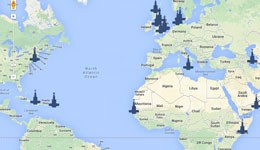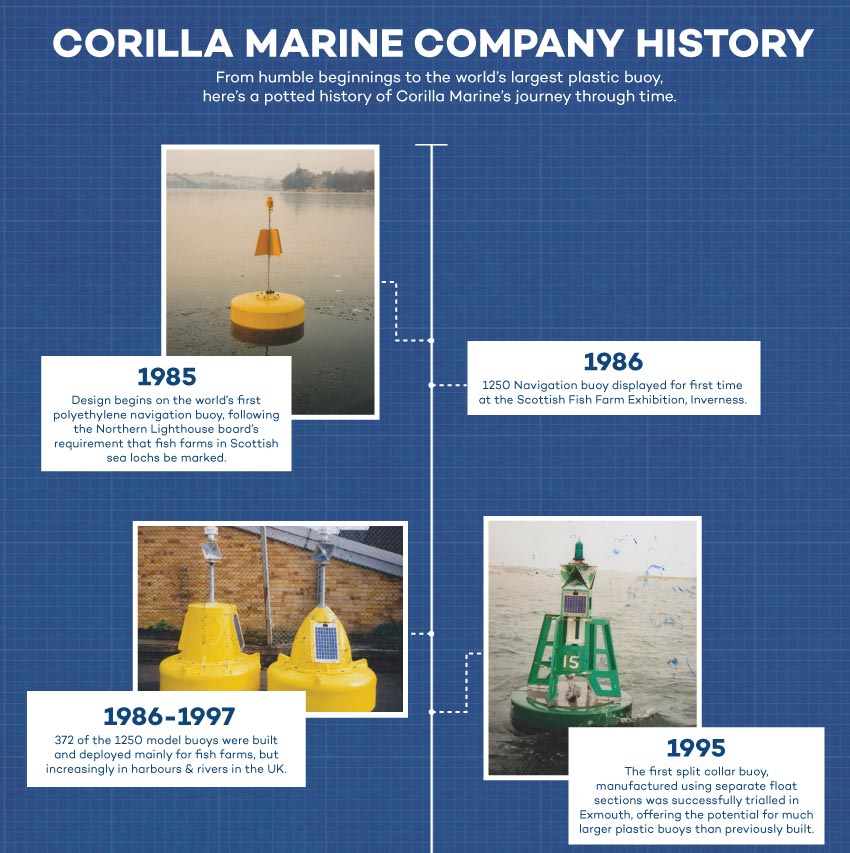Company timeline
From humble beginnings to the world’s largest plastic buoy, here’s a potted history of Corilla Marine’s journey through time.
1985 – Design begins on the world’s first polyethylene navigation buoy, following the Northern Lighthouse board’s requirement that fish farms in Scottish sea lochs be marked.
1986 – 1250 Navigation buoy displayed for first time at the Scottish Fish Farm Exhibition, Inverness.
1986-1997 – 372 of the 1250 model buoys were built and deployed mainly for fish farms, but increasingly in harbours & rivers in the UK.
1995 – The first split collar buoy, manufactured using separate float sections was successfully trialled in Exmouth, offering the potential for much larger plastic buoys than previously built.
1997 – Eason Marine invited to visit Republic of China to advise their Ministry of Transport.
1998 – EM2000 buoy trialled against Tideland Signal’s after complaints that pilots were unable to see the lights of the Tideland buoy in rough weather.
2001 – First deliveries of buoys to PD Ports.
2002 – EM3000 First true 3 metre diameter buoy displayed @ Seawork.
2002 – EM1750 introduced.
2002 – XJF Plastics take over Eason Marine. Eason Marine name changed to EM Nav-aids & Co. Ltd.
2005/6 – EM3000 takes first place in the Trinity House Lighthouse Service Class 2 ‘Lightweight buoy Trial’.
2007 – Ministry of Defence & Royal Navy purchase buoys and towers for use in British waters at home and overseas.
2007 – PAE sent to the Gambia to help build and deploy 5 new navigation buoys for the River Gambia.
2008 – Design & order of the worlds largest polyethylene buoy for PD Ports
2009 – Corilla Group purchased XJF Plastics.
2011 – Corilla Marine visit Mombasa, Kenya to help build up 8 buoys ready for deployment at the ‘World Food Organisation’ port of Mogadishu, Somalia
2012 – Danish Maritime Authority place an order for 3 metre and 2.4 metre buoys.
2012 – Dutch company ITO order 47 EM3000 Class2 Mk1 buoys for deployment in the Caspian sea.

 Where are our buoys?
Where are our buoys?
